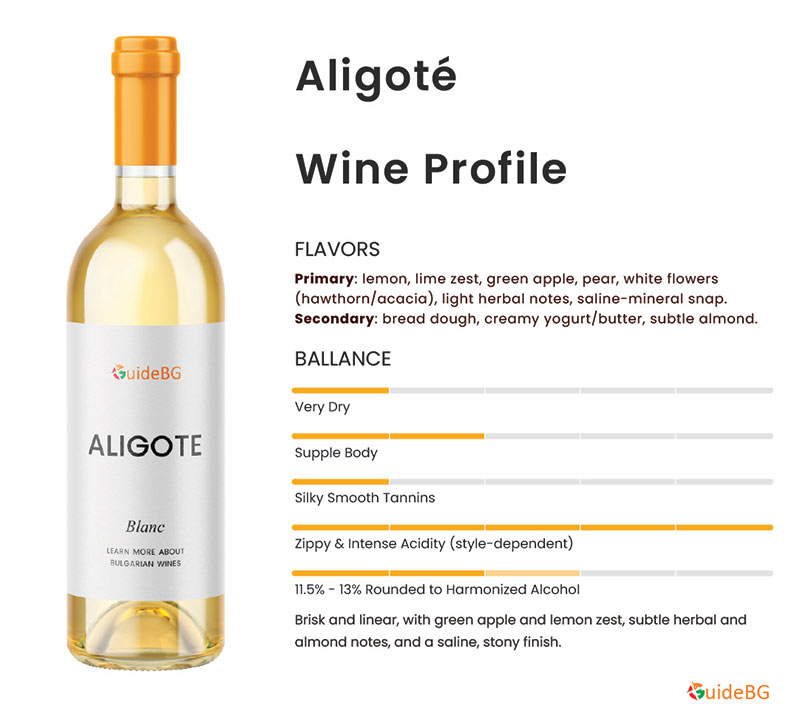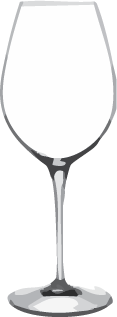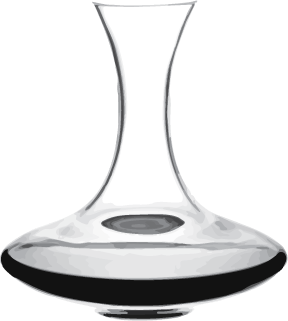In Bulgaria, it’s a minor but established variety, traditionally found in the Danube Plain / Northern and Black Sea zones, where it delivers crisp, food-friendly whites and base wines for sparkling styles. Aligoté is Burgundy’s other historic white grape (sibling to Chardonnay), known for bright acidity, citrus-orchard fruit, and a saline, mineral edge. DNA work shows it’s a natural cross of Pinot × Gouais Blanc (Heunisch), with two notable biotypes in Burgundy: Aligoté Doré (often lower-yielding, more textural) and Aligoté Vert.

Bulgarian Aligoté shows a brisk citrus-and-green-apple core, sharpened by Black Sea breezes and the Danube Plain’s cool nights. It’s typically unoaked or gently raised on fine lees, emphasizing racy acidity and a saline-mineral snap, with a subtle almond note as it settles in the bottle.
Serving
8-10°C

Aroma white

Serve fresh

Food Pairing
Shellfish, oysters, grilled white fish, green salads, goat cheese, fried zucchini, Black Sea mussels, tarator, Shopska salad. High acidity is an excellent foil for salt, citrus, and light frying. (Style profile per Burgundy trade sources; local pairings adapted.)
What to Look For?
Pale lemon color; aromas of green apple, lemon/lime, white flowers, almond; palate is light-to-medium-bodied, racy, often lightly saline/mineral; typically unoaked.
Cellaring Potential
Best consumed young (1–3 years) for freshness; top Bouzeron or old-vine, carefully handled cuvées may improve with age for 5–8 years.
Blending Partners
Usually dry still; also a permitted component in Crémant de Bourgogne (with Chardonnay/Pinot leading). In blends, Aligoté contributes acidity and structure.
Breeding Background & Regional Context
Born in Burgundy (first mentions in the 18th c.), Aligoté today makes up ~6–6.5% of Bourgogne vines, with Bouzeron AOC (1997/98) the only village-level appellation dedicated to it. In Bulgaria, it’s minor but present, historically suited to the Northeast (Varna, Dobrich, Shumen, Targovishte) and around Lyaskovets, where several estates bottle varietal Aligoté. See all PDO regions.
Alternative Grapes
Dimyat (BG), Riesling, Melon de Bourgogne (Muscadet), Grüner Veltliner—all offering high acidity and a lean, mineral frame in dry styles.


